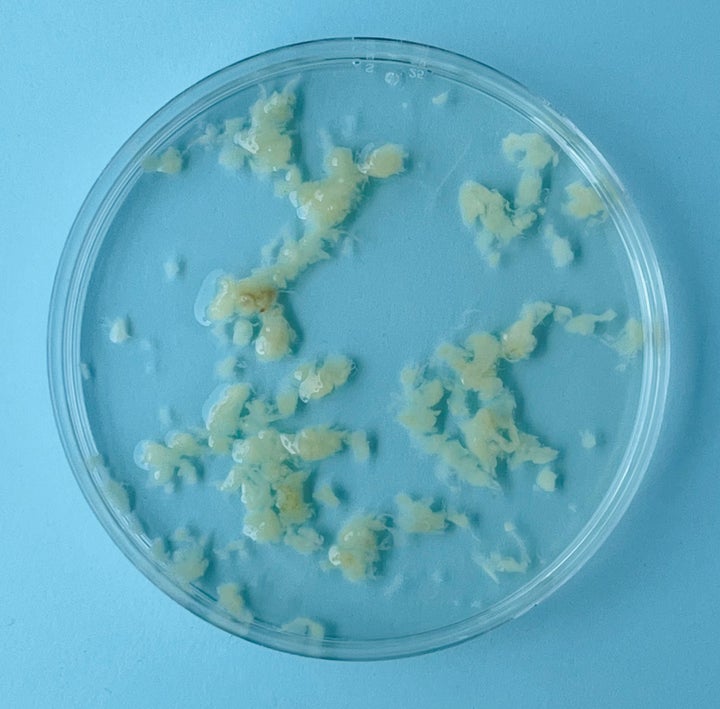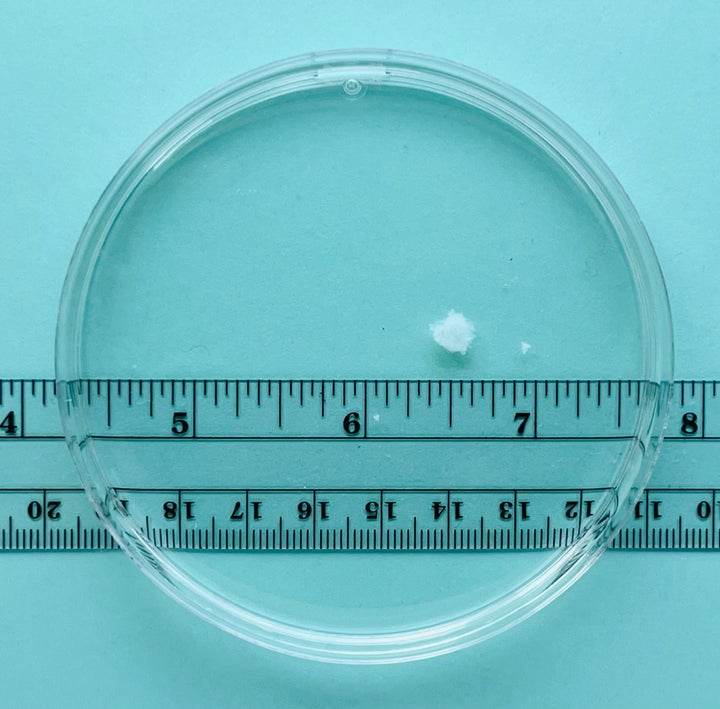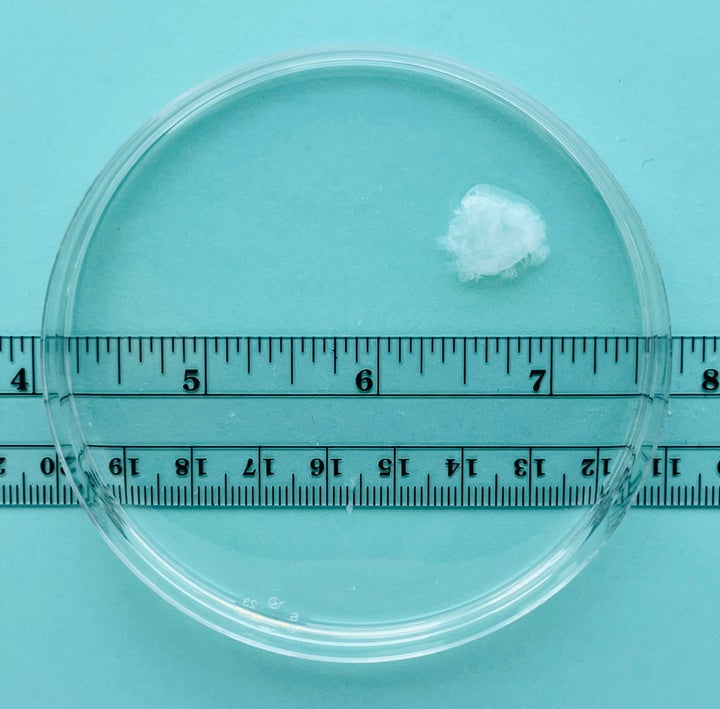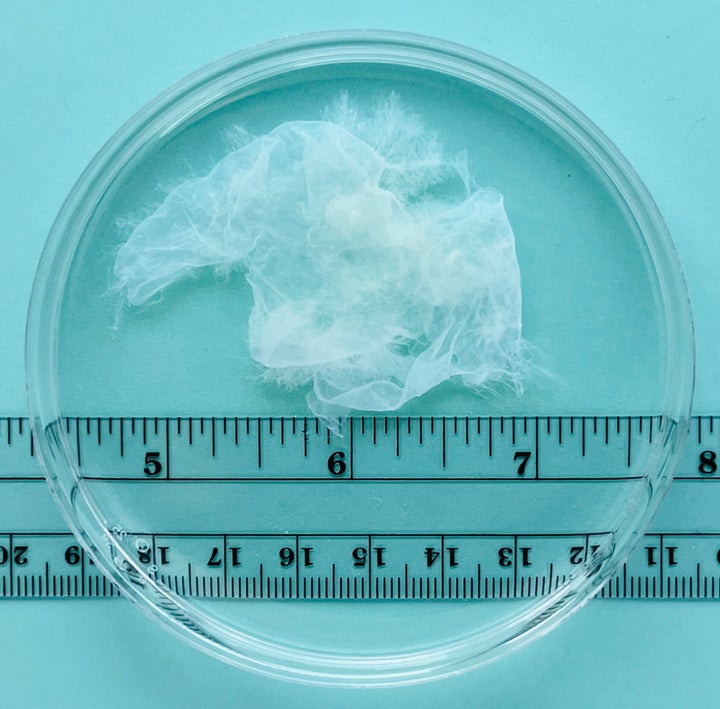Dr. Joan Fleischman, a family doctor in New York City, has been providing abortion care for over 25 years. When she thinks it might be helpful, Fleischman asks patients after the procedure if they want to look at the pregnancy tissue she has removed from their uterus.
“When I show it to them, they’re shocked and surprised and relieved to see it,” Fleischman told HuffPost.
“It’s incredibly reassuring to look at the tissue as it actually is,” she said, “given the other dominant images of pregnancy that people have in their minds.

In the wake of the June 24 Supreme Court decision that ended the right to abortion on a national level and has already stopped 66 clinics across 16 states from providing abortions, Fleischman and fellow members of the MYA network thought that now was the time to show the country exactly what is removed during the manual aspiration method of abortion.
The photographs, published on Oct. 19 in The Guardian, have gone viral, spurring claims that Fleischman somehow removed some of the tissue or manipulated the images.
But other doctors HuffPost spoke with confirmed that what Fleischman did was rinse the blood off the tissue and photograph it without magnification. With the blood rinsed away, the tissue appears white.

What exactly am I seeing in these photos?
“You’re seeing the sac and villi. The sac is the amnion which surrounds the amniotic cavity, and eventually has amniotic fluid in it,” Dr. Jennifer Kerns of the University of California at San Francisco explained to HuffPost.
This amniotic fluid increases throughout pregnancy, eventually becoming the bag of water that breaks during a person’s labor.
“The embryo grows inside of the sac,” Kerns continued. “The villi are the frond-like structures which become the placenta.”
The gestational sac becomes visible on an ultrasound at around 20 days after conception.
The decidua, or decidual tissue, seen as flecks in the photograph of the four-week pregnancy, “is just like your period — it is your period, essentially,” explained Fleischman. This is the lining of your uterus that you shed when you have your period and thickens when pregnancy occurs.

Two-thirds of abortions are performed in the first eight weeks of pregnancy, and abortions under nine weeks can be performed by the manual aspiration method that Fleischman used. This involves numbing the cervix, dilating it to insert a cannula, and removing the pregnancy with a small handheld device. The whole procedure takes about one or two minutes, according to Fleischman.
“It’s very gentle and delicate, leaving the tissue intact,” she said.
Electric devices can also be used to perform the aspiration procedure, and in these cases, the pregnancy tissue is less likely to be removed intact.
When doctors perform an aspiration abortion in early pregnancy, “we look for the sac and villi to know that the abortion is ‘complete’ — that we have evacuated the pregnancy,” Kerns said.

Where is the embryo, and why can’t I see it?
When examining tissue removed this early in a pregnancy, doctors don’t expect to be able to see the embryo growing inside the sac because it is simply too small at this stage.
“Sometimes you can see the embryo with your eye around eight weeks, but more often after nine or 10 weeks,” Kerns said.
“I have always felt people overestimate what these specimens look like,” Dr. Alexis Melnick, a reproductive endocrinologist at Weill Cornell in New York City, said.
“The fetus itself at these early gestational images is not something you’re going to see with the naked eye,” she continued, saying she performs procedures “up to 10 weeks at this point, so I can tell you, you don’t see anything then.”
Fleischman has seen commenters online saying this is not what the early miscarriage tissue they passed looked like. This could be because of the blood that accompanies a miscarriage. There is no blood in the photos because Fleischman rinsed it off to make the sac and villi easier to see.
“I’m not going to invalidate anybody’s experience,” Fleischman said. “But I’ve never seen an embryo under nine weeks” in unmagnified pregnancy tissue.

What about images of embryos I’ve seen elsewhere?
Those pictures and illustrations serve important educational purposes and show a magnified view. Early ultrasound images are also magnified.
Fleischman explained that to take these particular pictures, she used a sieve to rinse the blood off the tissue and then preserved it in formaldehyde so that she could take the photographs.
“The embryo wasn’t rinsed away from the sac,” Fleischman clarified. “I did not remove anything.”
The photographs weren’t taken and shared as evidence of when an embryo can or cannot be seen, Fleishman added.
“The intent of the project was to give a clinical perspective, which we felt was missing,” she said. “Staff, patients, doctors, clinicians — everyone is surprised when they see what it actually looks like,” compared to other images of early pregnancy they were familiar with.

People may have seen a magnified image in an ultrasound picture, a magnified photograph, or an illustration in a textbook. Still, Fleischman’s photos provide a plain, lived experience of seeing with your own two eyes what an early pregnancy looks like.
“A magnified version of the embryo is being used in two ways, one is prenatal care,” Fleischman said. “Or it’s people that are against abortion and want to argue that life begins at conception. ”

Melnick isn’t sure the photos will do anything to affect the political landscape but believes they may have a personal impact on some people.
“I don’t think this will do anything to sway the ‘pro-life’ movement,” Melnick said. “I do think it’s really important for women who are struggling with their decision [to have an abortion].”
“It’s important for people to understand we’re not talking about something that highly developed at all,” she continued. “What we’re actually removing, when you look at this — this is not something that’s capable of living on its own outside the body by any means.”
